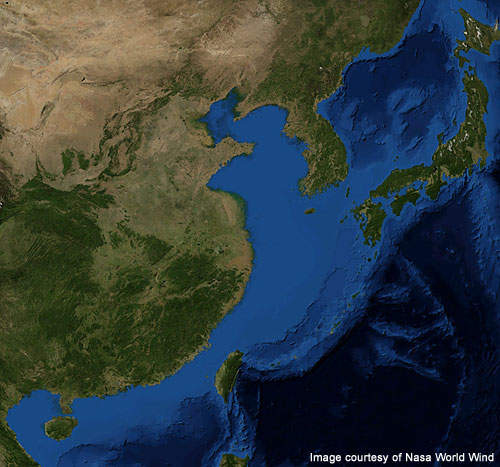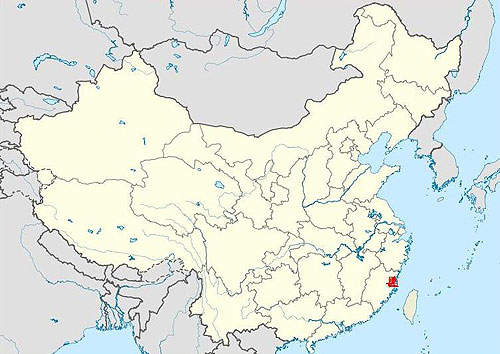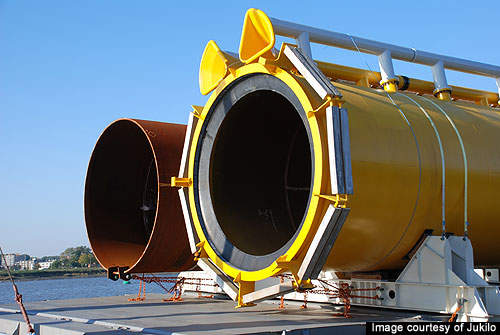Lishui 36-1 is a natural gas field located 150km away from the city of Wenzhou in the East China Sea. It is situated in Block 25/34 and covers a total area of 84.7km². The gas field is owned by Primeline Energy China Limited (PECL), Primeline Petroleum Corporation (PPC) and the China National Offshore Oil Corporation (CNOOC) in the proportion of 36.75%, 12.25% and 51% respectively.
Through its subsidiary CNOOCH Lishui Operating Company, CNOOC operates the field during the development phase while PECL focuses on further exploration in the region.
The gas field is expected to have a minimum life of 15 years from the commencement of commercial production.
First gas was achieved in July 2014. The production life may be further extended if additional gas resources are discovered in Block 25/34, which can be tied to the Lishui 36-1 infrastructure.
Natural reserves at Lishui 36-1
Lishui 36-1 has been proven to have probable natural gas reserves of 119,377 million cubic feet (mcf) and possible reserves of 92,809mcf as of March 2011. The total reserves are equivalent to 24.8 million barrels of oil.
Geology of the area
Block 25/34 is a part of Lishui-Jiaojiang Sag, which is a part of Taipei sedimentary basin, a rift zone that runs in the south-west and north-east direction.
The organic rich black shales known as Yueguefeng are the primary source of hydrocarbons in the region.
Discovery of the gas field in the East China Sea
Block 25/34 had been explored by many Chinese companies including the Ministry of Geology (MOG) and the CNOOC in 1980s. The two wells drilled by MOG encountered hydrocarbons.
Primeline acquired the exploration right in Block 32/32 in 1994. The company drilled the first discovery well in July 1997, after the evaluation of the historic and newly acquired seismic data. The Lishui 36-1-1 well was drilled to a total depth of 3,300m.
It encountered a 543m section of gross hydrocarbon gases flowing at a rate of 9.86mcf a day. The top reservoir section of 24m comprised 117 barrels of oil a day (bopd) of condensate, which flowed through 48-64’in choke.
The first appraisal well, Lishui 36-1-2, was drilled in June 2000 to a depth of 2,900m. It had similar reservoir quality and characteristics as the discovery well.
The second appraisal well Lishui 36-1-3, which was drilled 7km away, failed to encounter any hydrocarbons. The evaluation results, 3D seismic data and resource base did not prove the project to be commercially feasible then.
Primeline, PPC and CNOOC signed the Petroleum contract for Block 25/34 in 2005. Primeline merged the data of the previously conducted 3D seismic data of 233km² with the newly acquired 550km² to make a new data set for 737km², which covered Lishui 36-1 and nearby prospects. Six prospects, including the channel and canyon systems, were mapped in the area which is now known as the Lishui Gas Play.
The project was, however, regarded as a commercial discovery in 2007 due to the global rise of oil prices and continuous economic and rapid growth of gas infrastructure in China.
Development of the natural gas field
The development of Lishui 36-1 involved construction of a production platform and a 23km-long pipeline route for exporting gas to the onshore terminal.
A feasibility study was prepared by CNOOC Shangai and CNOOC Research Beijing following the approval of the reserve report by the Chinese State Reserves Committee in July 2007.
The agreement for sales of gas to the Zhejiang Natural Gas Development Company was signed in October 2008. The overall development programme (ODP) was completed in December 2009.
Primeline and CNOOC have since then signed a number of supporting documents including the supplemental development agreement (SDA), the joint operating agreement (JOA) and the implementation agreement.
The ODP was submitted to the government for approval in 2011, following which the companies acquired the site to construct the terminal.






